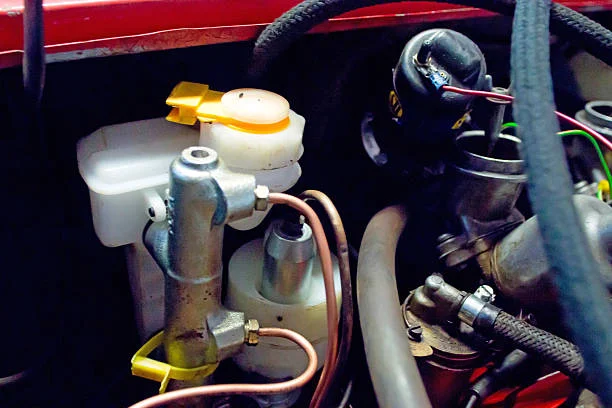Whether you’re driving a high-performance Corvette or a reliable daily driver like the Accord, your braking system’s reliability starts with the master cylinder. This crucial component transforms your foot’s pressure into hydraulic force—powering your brakes and, in manual vehicles, also affecting clutch performance. But like all parts, the master cylinder doesn’t last forever.
So, how long does a master cylinder actually last? What signs should you watch for when it starts to fail? Let’s break down its typical lifespan and the red flags that signal it’s time for a replacement.
Typical Lifespan of Cylinders
On average, a master cylinder can last anywhere between 60,000 and 200,000 miles, depending on driving habits, maintenance, and vehicle type. Some last the lifetime of the car, while others may begin to show signs of wear much earlier—especially in vehicles that experience a lot of stop-and-go traffic, heavy towing, or high-performance driving.
For example, a sports car like the 2007 Chevrolet Corvette Clutch Master Cylinder may experience more wear on its hydraulic components due to aggressive driving styles. High-speed braking, quick clutch engagement, and track use can all put added strain on the master cylinder, shortening its lifespan.
On the other hand, regular maintenance—such as changing your brake fluid every few years—can significantly extend the life of your master cylinder. Contaminated or old fluid can cause internal seals to degrade more quickly, leading to leaks and reduced hydraulic pressure over time.
As your car ages, it’s wise to inspect the master cylinder during brake jobs or when changing clutch fluid in manual transmission vehicles. Small issues can often be addressed early before they impact your ability to stop or shift smoothly.
Don’t miss this next story—it’s packed with helpful info!
Signs It’s Time for a Replacement
Even if a master cylinder hasn’t completely failed, there are clear signs that it’s starting to go bad. Ignoring these symptoms can lead to brake system failure or dangerous driving conditions.
1. Soft or Spongy Brake Pedal
When the pedal no longer feels firm and instead sinks slowly to the floor, it often indicates internal leaks or air in the system—both of which can point to a failing master cylinder.
2. Brake Warning Light
If your brake light is illuminated on the dashboard, check the fluid level first. If it’s low without an obvious leak elsewhere, the master cylinder could be leaking internally and failing to hold pressure.
3. Brake Fluid Leaks Near Firewall
Fluid dripping or collecting near the brake booster or firewall is a classic sign of a leaking masters cylinder. These leaks reduce pressure in the system and must be addressed quickly.
4. Uneven Braking or Clutch Issues
In manual transmission vehicles, a failing clutch masters cylinder can lead to gear engagement problems or uneven braking. Replacing a worn part—like the 2018 Chevrolet Corvette Clutch Master Cylinder—can restore hydraulic performance and make driving more predictable.
If you’re driving something more commuter-focused, like a 2004 Accord, the symptoms might show up more subtly. A spongy clutch pedal or delayed gear engagement are often the first clues. Installing a quality replacement such as the 2004 Honda Accord Clutch Master Cylinder can resolve these issues and restore smooth operation.
Replacing your masters cylinder isn’t just about restoring pedal feel—it’s about protecting your entire braking system. When it fails, it can put additional stress on calipers, brake lines, and other critical components.
While there’s no exact expiration date for your masters cylinder, knowing the signs of wear and when to act can help you avoid bigger, more expensive issues. Whether you’re driving a high-performance sports car or a dependable sedan, replacing the masters cylinder when needed is key to keeping your brake system responsive and safe.
Don’t miss our newest articles—they’re all waiting at Management Works Media.






